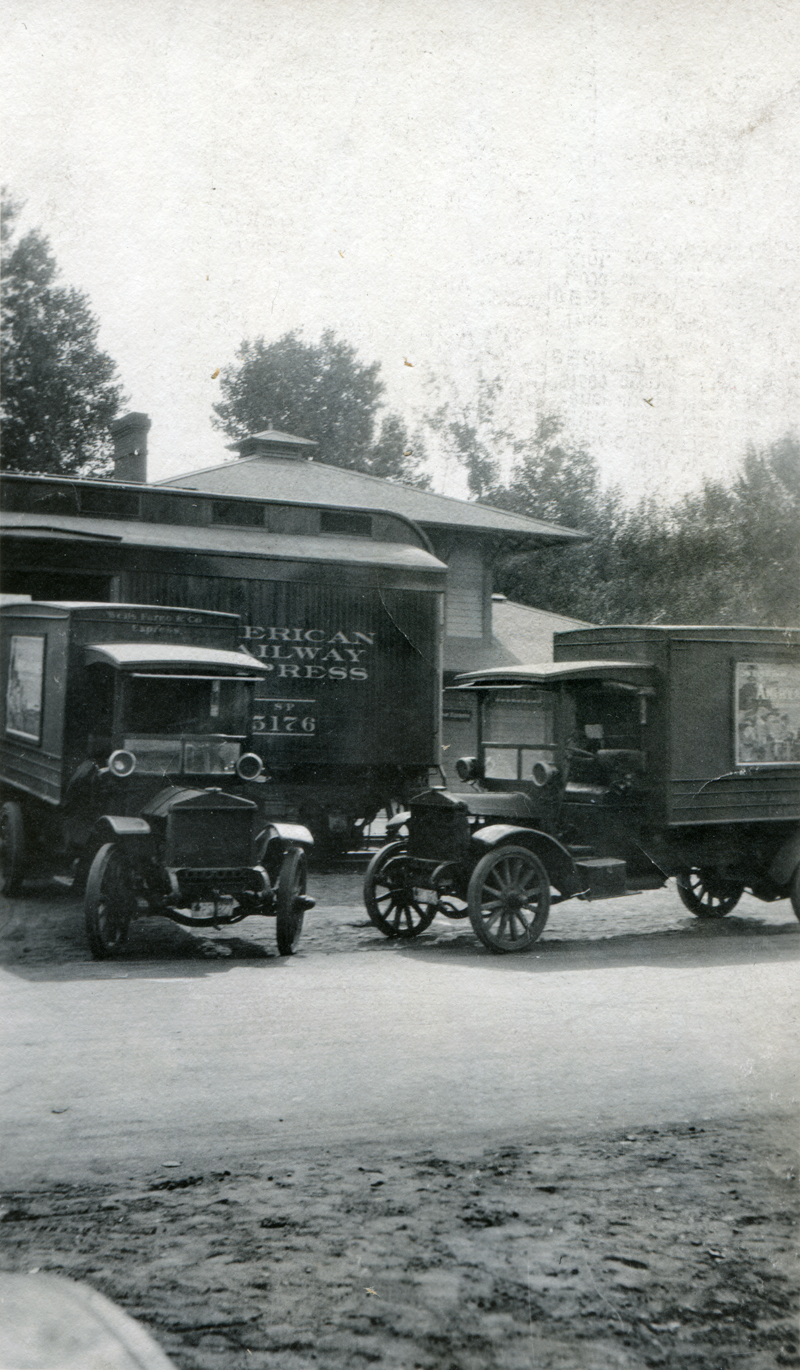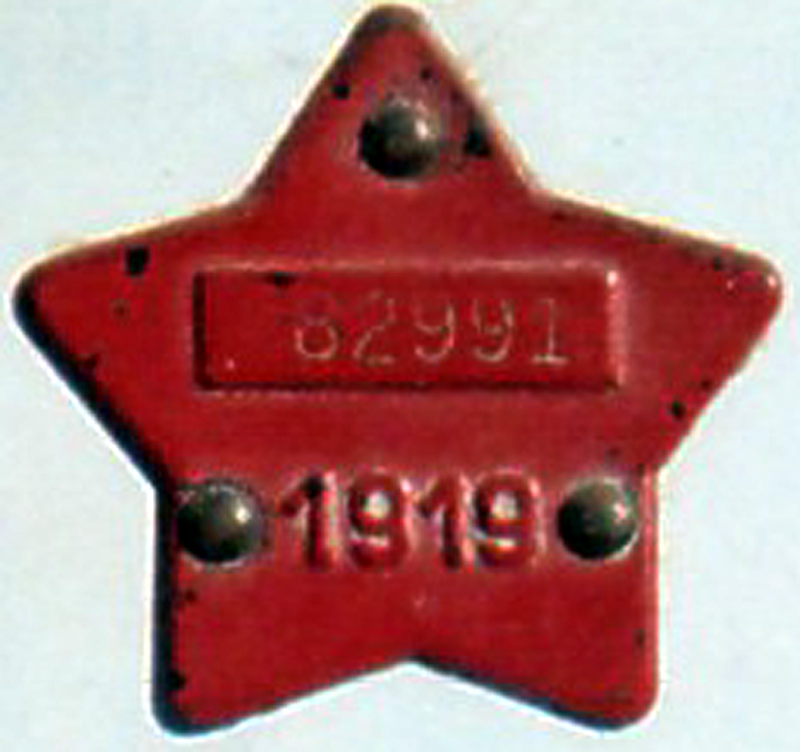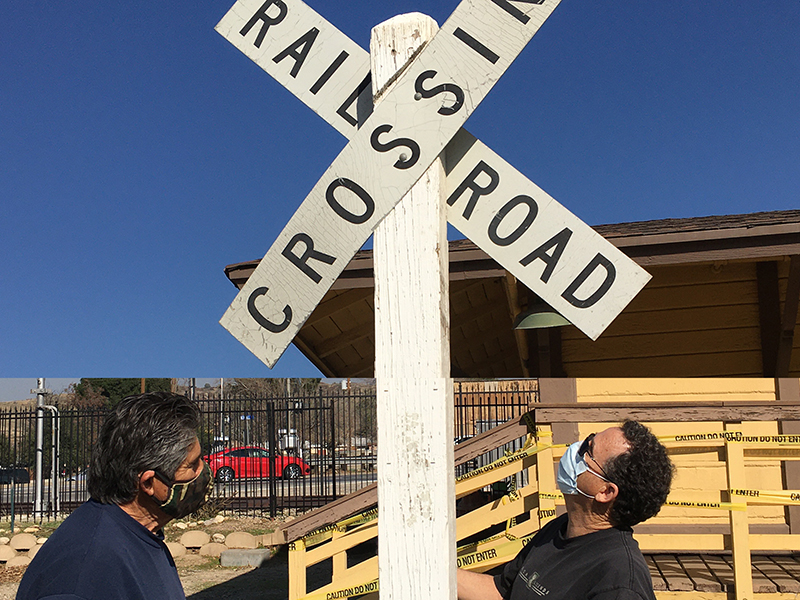|
|
Saugus, California

Click image to enlarge Two Wells Fargo & Co. Express trucks meet a Southern Pacific American Railway Express boxcar to load and unload freight and mail at the 1887 SPRR Saugus Depot in 1919. No written information accompanies this photograph, so all we know is what we see in the photo, which is plenty. A few clues tell us it's the Saugus depot. First, the building is correct. But that's not enough. The Saugus depot was a cookie-cutter structure built from one of a few sets of standardized construction drawings. It had sisters. But second, the trees are correct, when compared to known Saugus depot photos from the period. Third, the placement of the small "Wells Fargo & Co. Express" sign on the building is correct (only "Co. Express" is visible). Fourth, this photo has been stored with a grouping of known Saugus depot photos. As for the date, a few things. The trucks are of a type used by Wells Fargo Express from about 1913 to the end of the decade. They have no hood ornament, which makes identification difficult, and they appear to have no headlights other than those mounted next to the windshield, which we can't explain. The advertisement on the side of each truck provides a clue. The American Red Cross launched a campaign in 1916 to boost its membership to 1 million members nationwide. By the time America entered the war in 1917, Wells Fargo had joined the effort, enrolling its employees in first-aid classes and encouraging them to join the Red Cross. At the end of 1917, Wells Fargo started advertising the American Red Cross membership drive on the sides of its wagons and trucks. Although not too legible, the advertisements seen here appear to be part of that effort. (Note that wartime campaigns didn't magically stop with the signing of the armistice at 11 a.m. on Nov. 11, 1918. Things like the draft, war bond sales and Red Cross recruitment carried over into 1919.)
In 1920, California switched to embossed metal license plates. From 1887 to 1980, the Saugus depot stood at the southeast corner of Bouquet Canyon (San Fernando) Road and Drayton Street ... in Saugus. In 1980 it was moved to William S. Hart park in Newhall where it became the headquarters of the Santa Clarita Valley Historical Society.
HS1901: 19200 dpi jpeg from original 3x5½" print. |
See Also:
Docent Training
Opens 6/21/1888
Exterior 1890s
Track View 1907-12
1910
1914
2 Wells Fargo Express Trucks at Depot 1919
2 Locomotives at Depot Late 1910s
1930s-1940s
"Oh, Susanna!" 1936
8/23/1936
1938
May 1941
Depot Screenshots in "Suddenly" 1954
Sending Train Orders 10/10/1967
1967-1970
1967-1970
1970
1970
1970
1970
Snow Day 12/19/1970
Train Orders 11/1978:1
Train Orders 11/1978:2
Train Orders 11/1978:3
"Supertrain" NBC 1979: Interiors, Exteriors
4/17/1980 Mult.
New Signage 2018
Crossbuck Reinstalled 2021
|
The site owner makes no assertions as to ownership of any original copyrights to digitized images. However, these images are intended for Personal or Research use only. Any other kind of use, including but not limited to commercial or scholarly publication in any medium or format, public exhibition, or use online or in a web site, may be subject to additional restrictions including but not limited to the copyrights held by parties other than the site owner. USERS ARE SOLELY RESPONSIBLE for determining the existence of such rights and for obtaining any permissions and/or paying associated fees necessary for the proposed use.






























